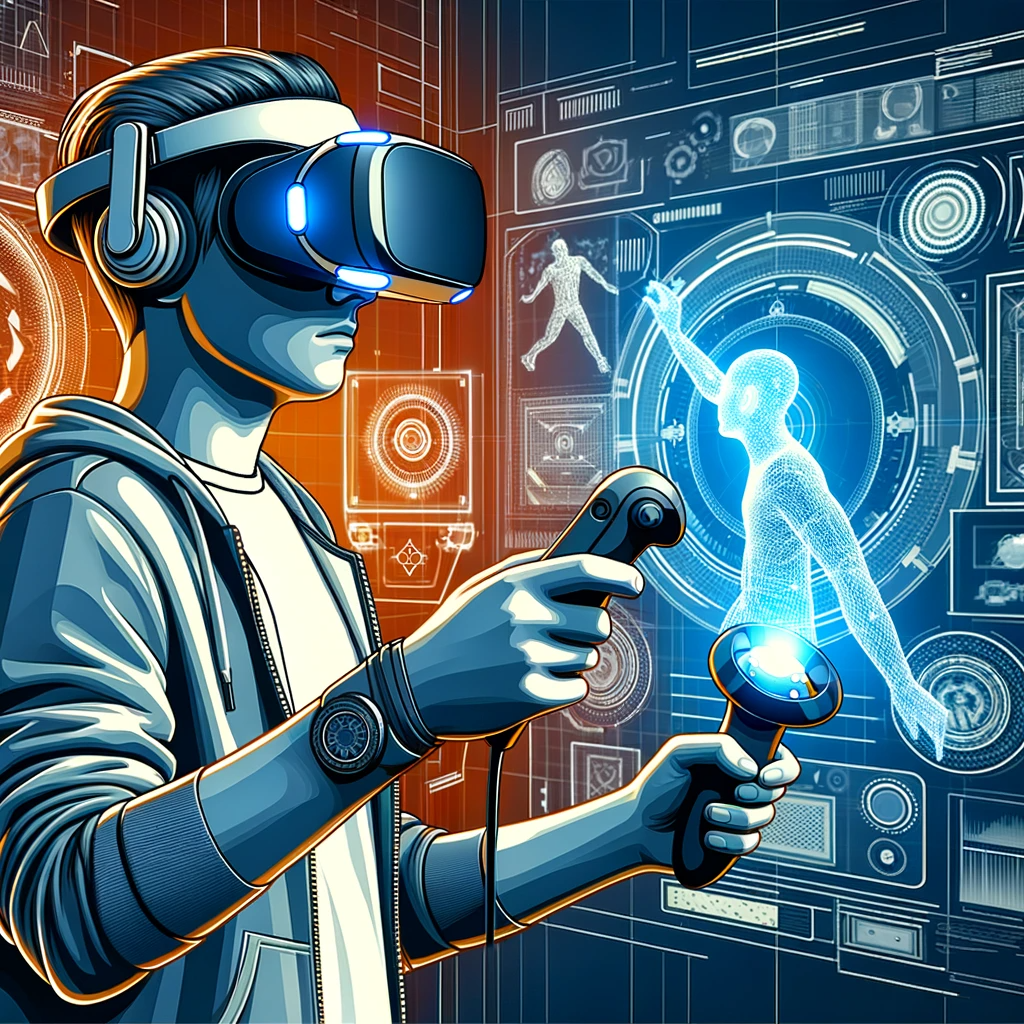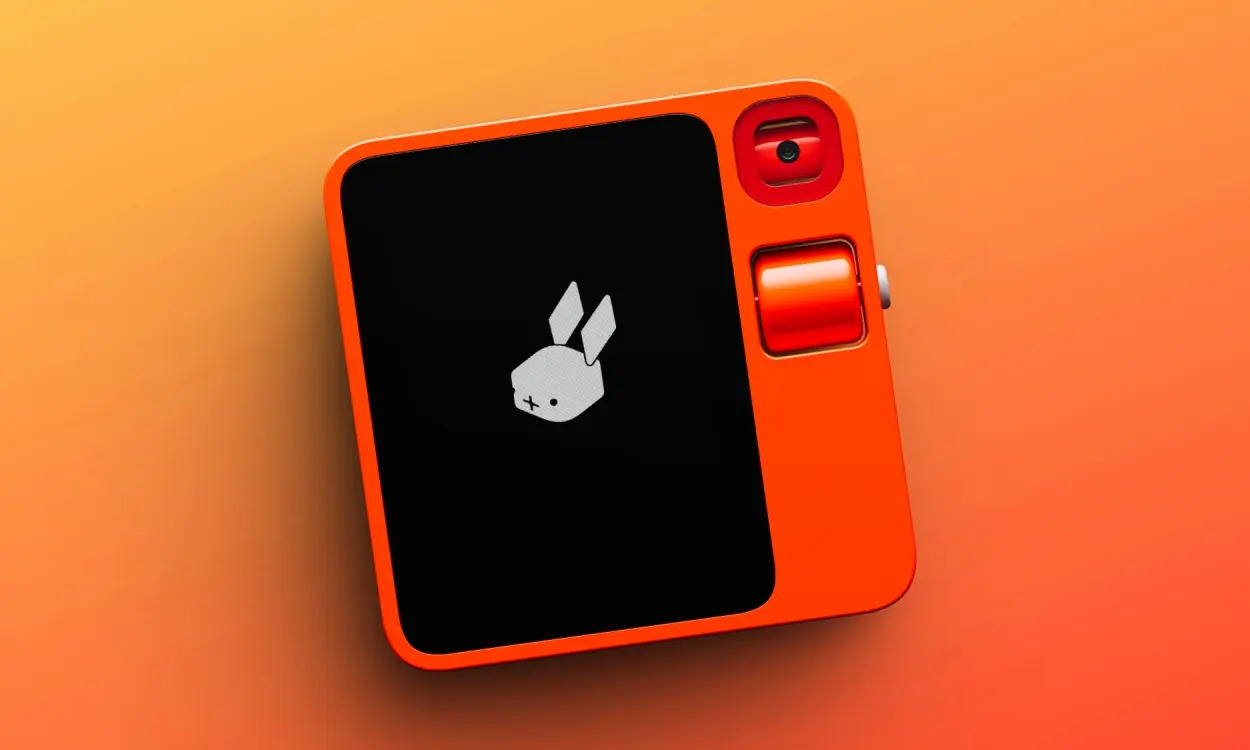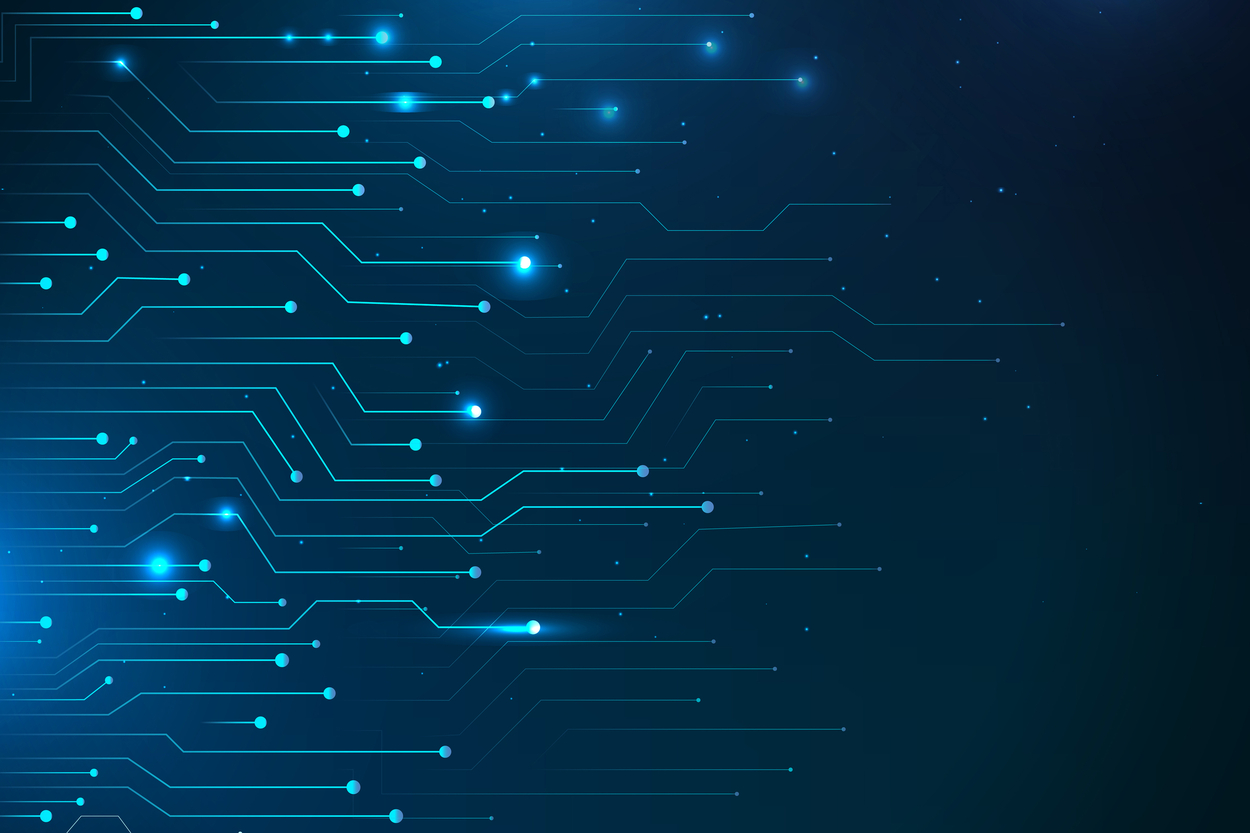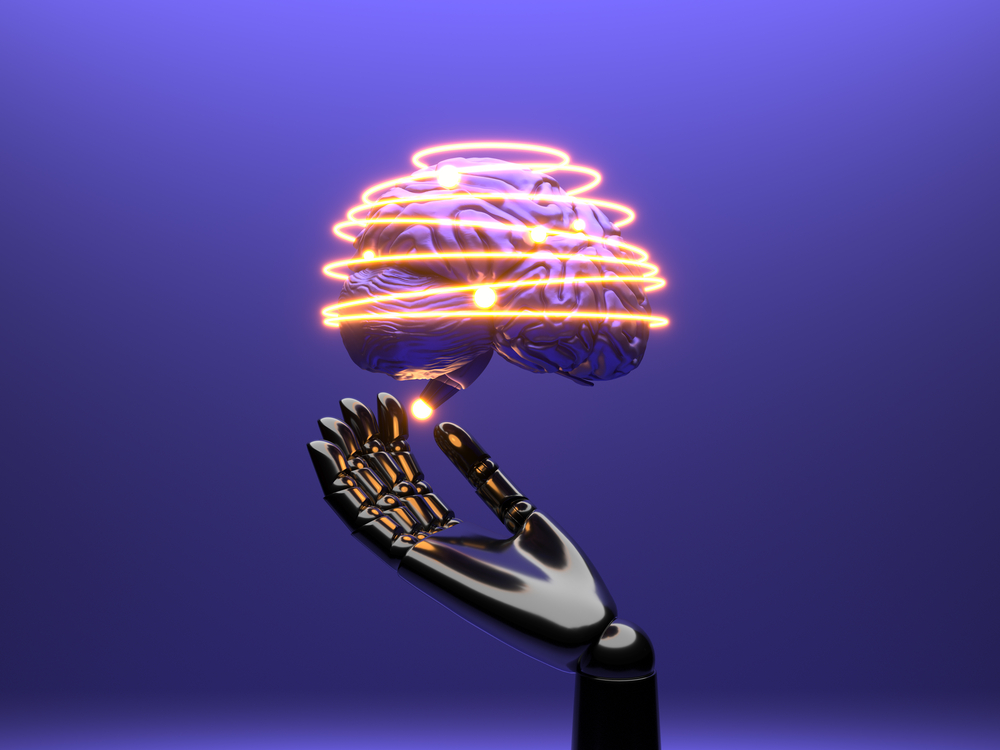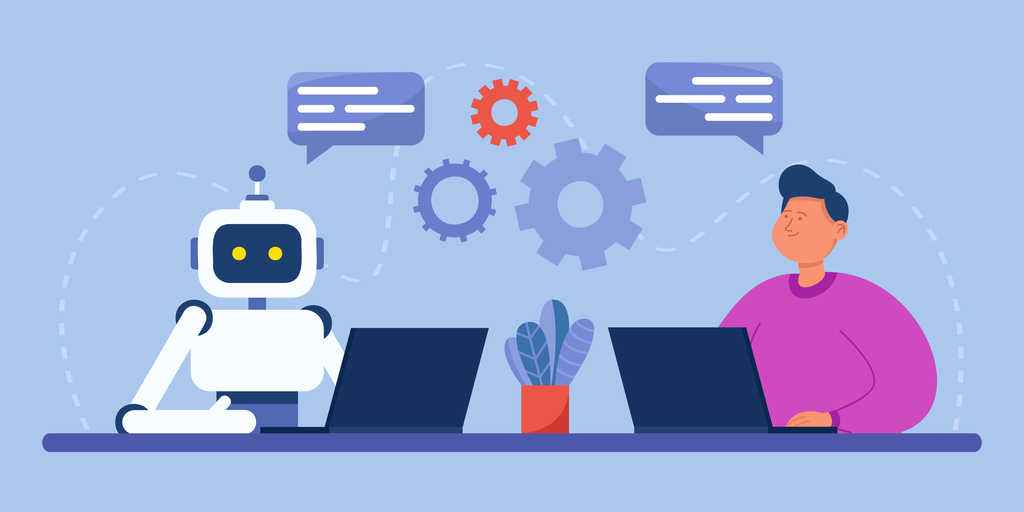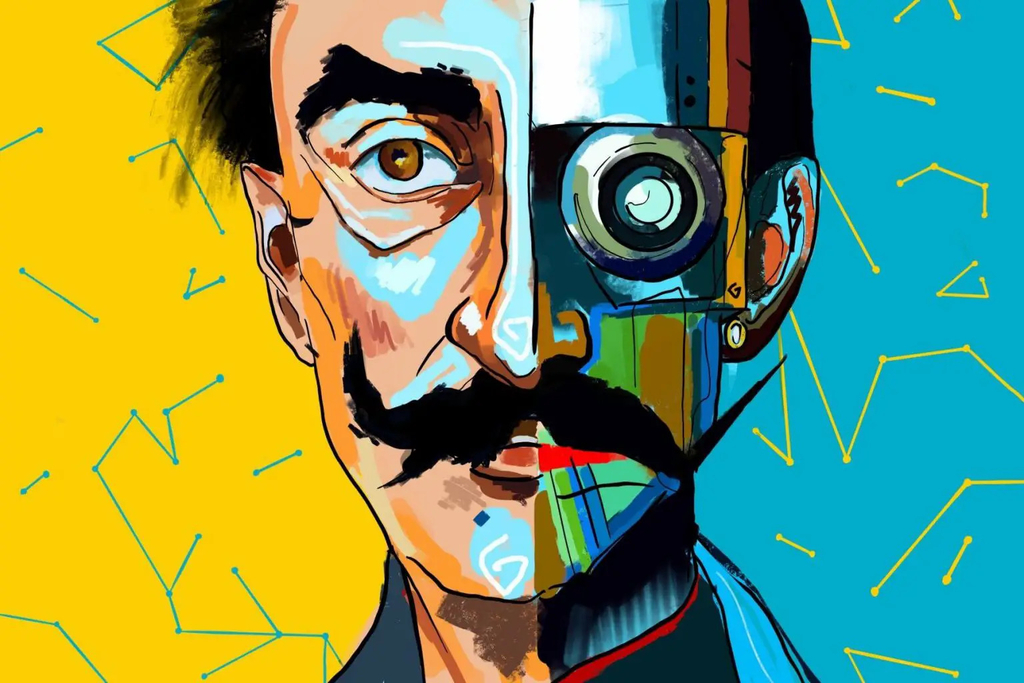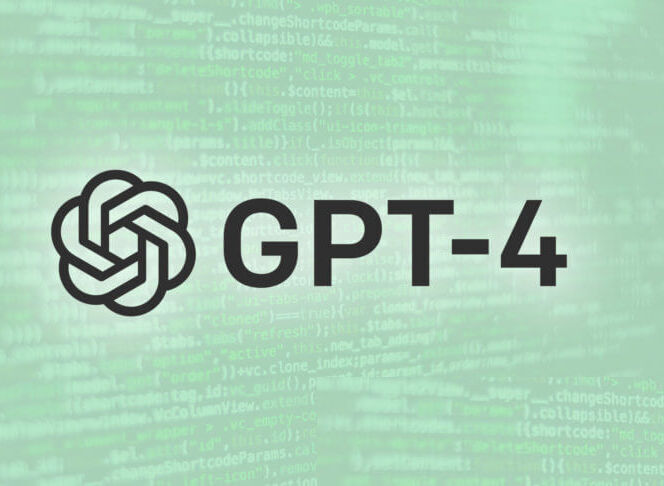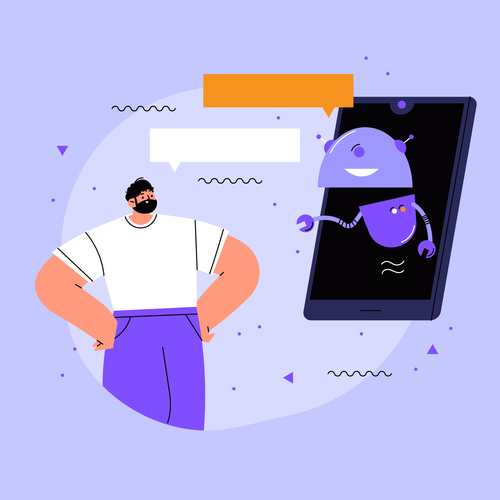The metaverse is a digital realm where VR, AR, and AI converge to create a platform for exploration, creativity, and social interaction. It was initially designed for gaming but has evolved into a versatile platform for economic exchange and cultural expression. However, privacy, data security, and digital divides are significant challenges that must be addressed to navigate this digital frontier responsibly. Our collective efforts to shape its future will be critical in ensuring that it becomes a vibrant display of human innovation, creativity, and inclusivity.
Rabbit AI at CES 2024: Shaping Tomorrow’s Tech Landscape
Rabbit AI promises a future sculpted by innovation. Imagine personalized education, accessible healthcare, and scientific breakthroughs forged in human-AI partnerships. But like any powerful tool, it comes with risks – job displacement, social inequalities, and the insidious creep of AI bias. The key lies in shaping the future, not fearing it. Robust ethical frameworks, user education, and open dialogue are the tools we wield to ensure AI serves humanity, not the other way around. Rabbit AI is not a harbinger of doom, but a sculptor of possibility. Let us wield it with wisdom, ensuring the dance between human and machine plays in harmony, for the benefit of all.
Demystifying AI: Bridging the Explainability Gap in Neural Networks
Explore the enigmatic world of artificial intelligence as we delve into the profound intricacies of neural networks. Unravelling the ‘explainability gap,’ we navigate through the challenges and innovative techniques shaping AI’s decision-making processes. Discover the transformative potential of these advancements, from deciphering complex algorithms impacting critical decisions to unveiling cutting-edge methods that shed light on neural network operations. Join us on this insightful journey, redefining the relationship between technology and comprehension, and envision a future where trust, transparency, and human-AI synergy pave the way for a harmonious coexistence.
The Singularity Debate: Superintelligence and Ethical Imperatives
The Singularity’s shadow looms, with promises of boundless progress and unsettling uncertainties intertwined. While AI may reshape our world for the better, solving global challenges and enhancing human capabilities, its unbridled power poses existential risks like “robot takeover” and ethical conundrums like biased algorithms. To navigate this uncharted territory, we must prioritize responsible AI development, ensuring transparency, mitigating bias, and anticipating unintended consequences. Only through informed discourse and ethical governance can we ensure the Singularity paints a future of shared prosperity, not a dystopian tragedy.
The Language Revolution: GPT’s Role in Advancing Natural Language Processing
GPT models have revolutionized the field of Natural Language Processing (NLP), enabling machines to comprehend and respond to human language with an unprecedented level of accuracy and fluency. This breakthrough has created endless possibilities, revolutionizing machine translation, text summarization, and question-answering. GPT models hold immense promise for various domains, including healthcare, education, and customer service. Nevertheless, responsible progress and ethical considerations are vital to guarantee that these powerful tools are used for the advancement of society. As GPT models continue to grow, their impact on human-machine interaction will inevitably expand, bridging language barriers and revolutionizing how we connect with computers.
Artificial Intelligence Mastery: Decoding DALL-E’s Creative Process
The collaboration between two advanced AI technologies, Generative Pre-trained Transformers (GPTs) and diffusion models, has resulted in the revolutionary creation of DALL-E. GPTs decode textual descriptions and connect imagination with visual output by offering detailed instructions that guide diffusion models. Diffusion models refine chaos into detailed images, following the directions of GPTs. This partnership brings together artistry and technology to redefine communication and creativity through images. GPTs enhance their language understanding by incorporating visual feedback, while diffusion models sculpt images from noise to bring envisioned details to life. The progress made in GPTs and diffusion models is a reflection of how AI is transforming the visual creativity landscape. DALL-E is a vital tool that simplifies the translation of imagination into visual realities, thus revolutionizing the perception, communication, and creation of visual arts.
Beyond Borders: GPT-4’s Brilliant Breakthroughs
OpenAI’s newest creation, GPT-4 Turbo, is transforming the capabilities of AI by seamlessly integrating technology and collaboration with humans. It surpasses mere text interpretation by navigating visual subtleties, intricate coding, and vast online domains. It has the potential to generate code, enhance artistic expression, provide intelligent financial advice, offer personalized fashion recommendations, assist with virtual self-representation, create imaginative stories, and help people achieve their fitness goals. GPT-4 Turbo is a versatile companion that is shaping a new technological narrative. It is not just a tool, but also a promise of unexplored possibilities, combining advancements in AI and human cooperation. It will be fascinating to observe how individuals interact with this groundbreaking technology.
AI-Generated Art: Ethical Implications for Ownership, Bias, Misinformation, and Artists
AI-generated art raises the ethical question of ownership. The artists who created the training data, the developers of the AI algorithm, and the users who generate the art all have a claim. There is no clear consensus on who should ultimately own AI-generated art.
One possibility is that AI-generated art could be considered public domain, meaning that it is not owned by anyone and can be freely used by anyone. Another possibility is that ownership could be determined by the copyright laws of the country in which it is created. A third possibility is that ownership could be shared by the artists, developers, and users.
Ultimately, the question of who owns AI-generated art is a legal one that will need to be decided by the courts. However, it is important to start thinking about this issue now so that we can develop clear and fair guidelines for the future.
